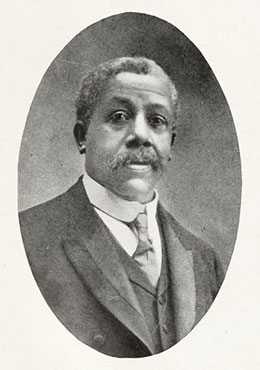14 Edward Alexander Bouchet
Edward Alexander Bouchet |
 |
Time period:19th – 20th Century Subject:Chemistry and Physics (along with astronomy, physical geography and physiology) |
|
Biography:Edward Bouchet was born in the US (New Haven, Connecticut) on September 15th, 1852. He attended the New Haven High school and also won valedictorian of this class at Hopkins Grammar school in 1870. He then continued his education at Yale College in the same year and was the first African American to graduate from Yale College in 1874. He was also elected for the Phi Beta Kappa, the oldest academic honour society in the country. He continued his graduate studies at Yale and received a Ph.D. in Physics in 1876. He also become the first African American to obtain a doctoral degree from an American university.
His later life included teaching chemistry and physics for over 26 years at the Institute of Coloured Youth which is located in Philadelphia, PA. He also taught classes in astronomy, physical geography, and physiology.
|
|
Summary of their contributions:Due to this race, Bouchet was not able to land a position in a college as a professor. He instead devoted this time at the School for Colored Youth in Philadelphia. He brought in his chemistry and physics knowledge to one of the very few institutions that had a core academic program for African Americans. After leaving the school in 1902, he continued his teaching career as a high school teacher in St. Louis, Missouri and St. Paul Normal and Industrial School in Virginia. Additionally, he was a principal at the Lincoln High School.
Although he did not have any ground-breaking discoveries, he offered his knowledge in various areas in education. In honour of this, Yale created an award (named the Bouchet Leadership Award) for those who contribute to diversity in higher education.
|
|
Integration with the BC Secondary Science Curriculum:Edward Bouchet research revolved around geometrical optics and wrote a dissertation named “On Measuring Refractive Indices” which was focused on geometrical optics. Optics are not directly in the BC Sciences/Physics curriculum but we can combine the contents from the physics (behaviour of light) and math (geometry) curriculum together:
By splitting optics into the study of light and geometry, we can incorporate lessons in students’ Science 8/Physics 8 and Math classes. |
|
References:Biography of Edward A. Bouchet: The Graduate School – Northwestern University. (n.d.). Retrieved December 8, 2023, from https://www.tgs.northwestern.edu/diversity/retention/bouchet-honor-society/biography-of-edward-a.-bouchet.html Edward Alexander Bouchet: The First African American to Earn a PhD from an American University – Connecticut History | a CTHumanities Project. (2022, February 12). Connecticut History | a CTHumanities Project – Stories about the People, Traditions, Innovations, and Events That Make up Connecticut’s Rich History. https://connecticuthistory.org/edward-alexander-bouchet-the-first-african-american-to-earn-a-phd-from-an-american-university/ Edward Alexander Bouchet—Family, Quotes & Achievements. (2020, August 18). Biography. https://www.biography.com/scientists/edward-alexander-bouchet This Month in Physics History. (June 2007). Retrieved December 8, 2023, from https://www.aps.org/publications/apsnews/200706/history.cfm Welcome | Yale Phi Beta Kappa. (n.d.). Retrieved December 8, 2023, from https://pbk.yalecollege.yale.edu/ |
|

